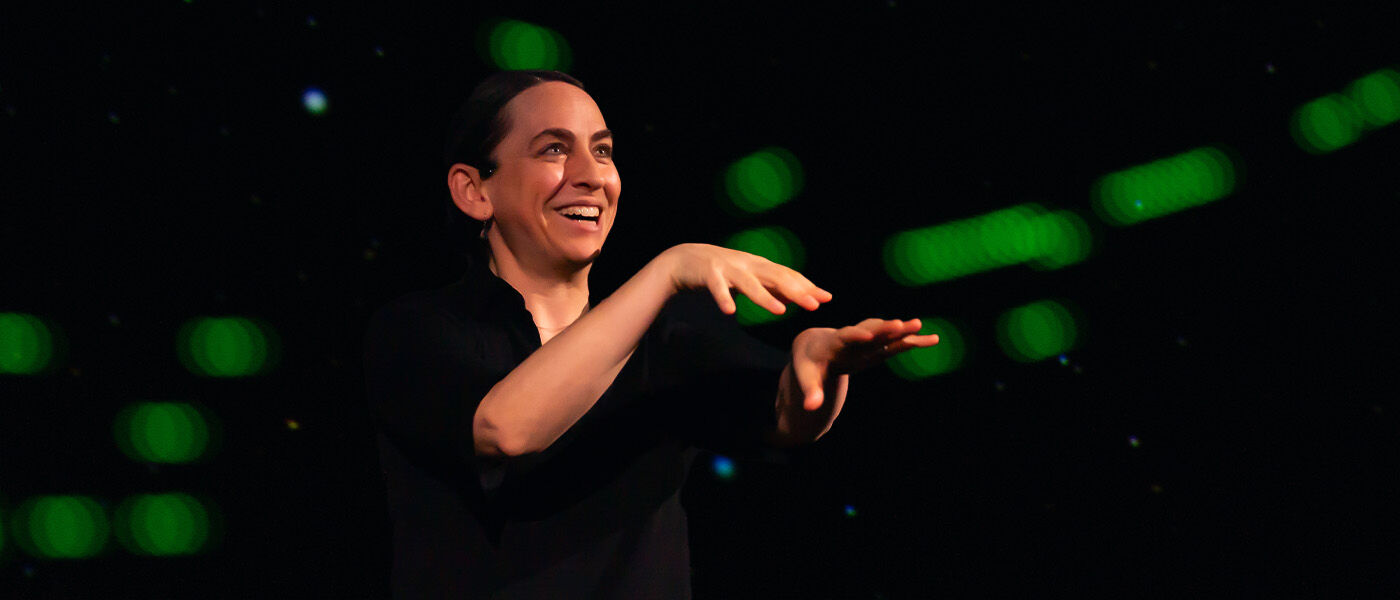Dr. Geha Space Talk: Orbits and Satellites: Rocket Science for Everybody
On May 29th, 2025, Liberty Science Center hosted Dr. Marla Geha, professor of astronomy and physics at Yale University for a new Space Talk: Orbits and Satellites: Rocket Science for Everybody.
Whether we realize it or not, each and every day we use rocket science in our lives. From navigation in our phones, to forecasting the weather, and all the way to the food we eat, our modern world relies more and more on technology launched into space every day. Dr. Geha has been teaching Yale courses on rocket science for years, and brought her expertise to the largest planetarium in the country to help us understand rockets, satellites, and orbits a little bit better.
Too small and far away to all be seen with our naked eye, space above our heads is swarming with satellites, almost 12,000 as of May 2025, each with their own orbit and role to play. To successfully orbit the Earth, a satellite needs to have the perfect balance between Earth’s gravity and the horizontal speed it is launched with. Launch a satellite without enough horizontal speed and gravity will pull it crashing back down to Earth, but launch it with too much horizontal speed and it would leave Earth entirely and soar endlessly into space. With the perfect launch, however, a satellite can achieve balance – enough horizontal speed to stop it from falling to Earth but not too much to carry it too far away – placing it in a stable orbit around Earth.
Not all satellite orbits are the same, however. Most of our 12,000 satellites live in what we call Low Earth Orbit, an area ranging from about 100 miles to 1,200 miles above Earth’s surface. Here, satellites speed along around 17,000 miles per hour, making one full orbit around Earth in less than 2 hours. Low Earth Orbit is where the International Space Station lives, as well as many of the satellites used for weather observations and scientific study of our home planet.
A little further out is Medium Earth Orbit, ranging from 1,200 miles to 22,000 miles above Earth’s surface. This is the realm of GPS satellites, constellations of dozens of satellites constantly broadcasting their exact location with a timestamp. Devices, like our cell phones, which communicate with GPS satellites can calculate their exact location on Earth by taking in these broadcasts from at least 3 of these satellites at a time by calculating how long the signal took to get from space.
Even further out is Geostationary Orbit, located precisely 22,236 miles above Earth’s surface. This special region of space places satellites in an orbit that takes exactly one Earth day, meaning they follow Earth’s rotation exactly and stay above the same location on Earth at all times. If you have ever used satellite TV, those satellites were in geostationary orbit. Additionally we find other communications satellites, as well as some weather and navigational satellites to augment those in Low or Medium Earth Orbit.
We want to thank Dr. Geha for sharing so much with us in the largest planetarium in the country about the wonders of orbits and rocket science! Join us on June 12, 2025 for our next Space Talk, Galaxy Formation and Evolution with Dr. Alyson Brooks, Associate Professor of Physics and Astronomy at Rutgers University.
